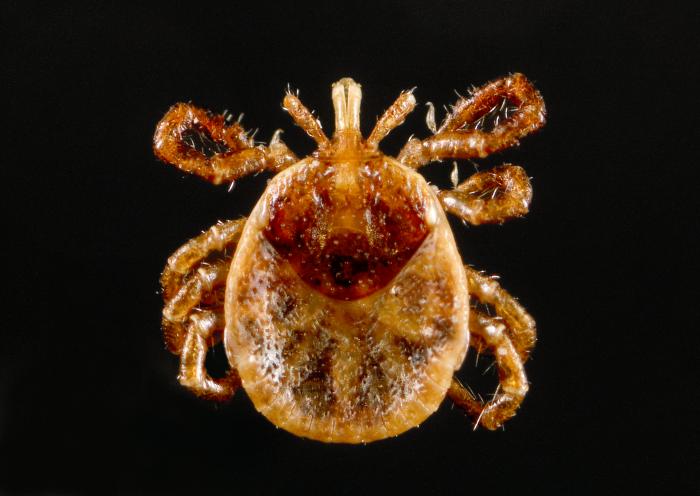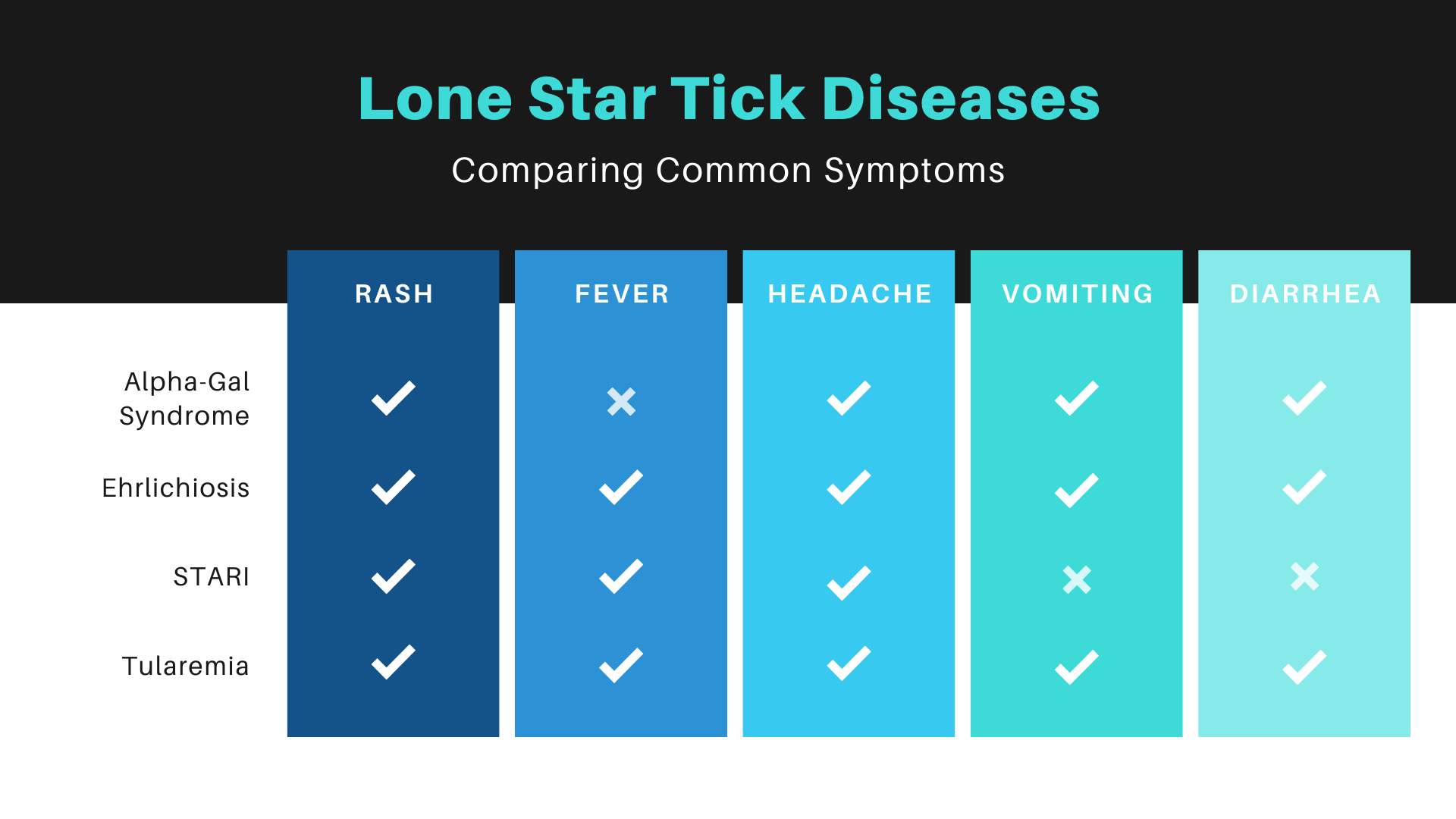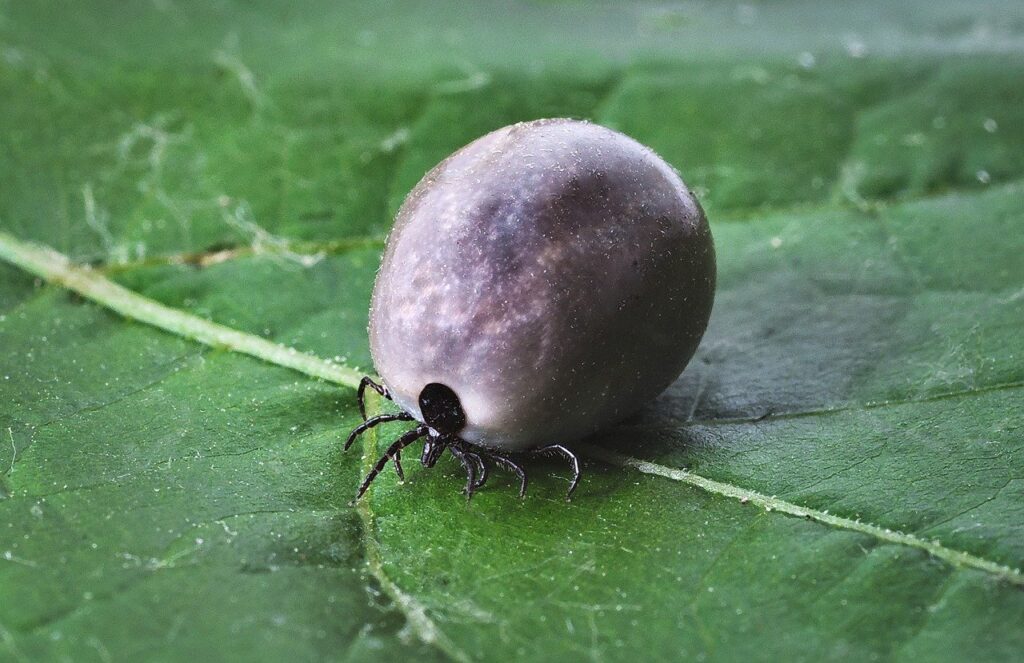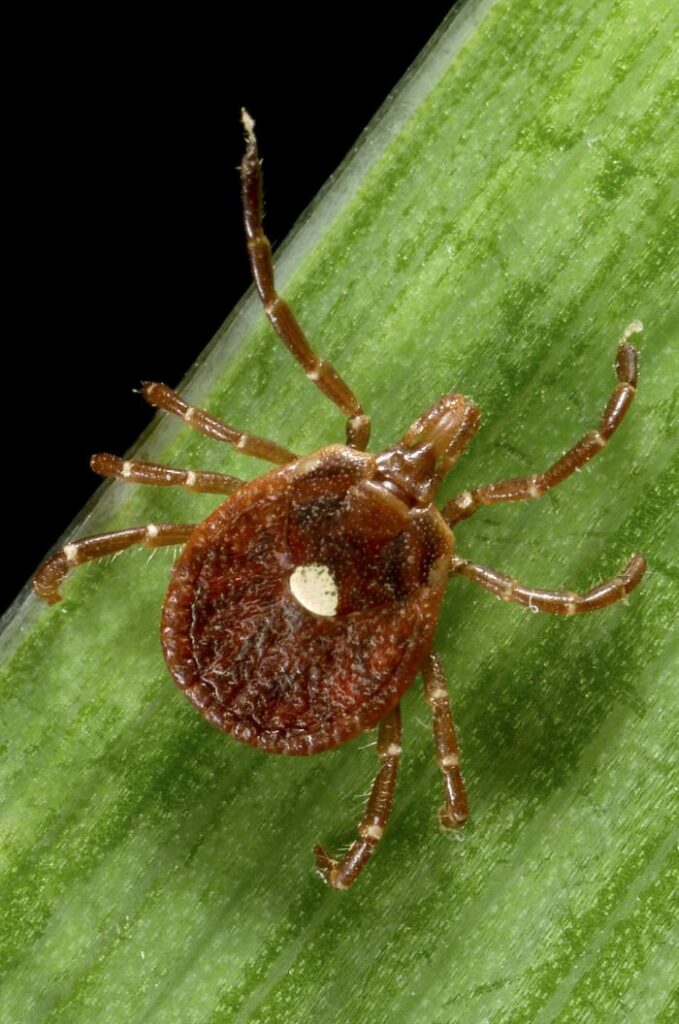What do Ehrlichia, Tularemia, and Southern Tick-Associated Rash Illness have in common? Well, besides being tongue twisters and challenging to spell, you can get them all from the Lone Star tick.
My interest in these three peaked when my dad discovered an adult female Lone Star tick attached to his hip. You can read his story here. Most people who contract a disease from the lone star tick, though, are bitten by ticks in the nymphal stage.
According to the CDC, “Nymphal ticks are much smaller than adult ticks, and people might not notice a nymph until it has been feeding for a few days. Nymphs are, therefore, more likely than adult ticks to transmit diseases to people.”

So, let’s say you or a loved one got bit by a Lone Star tick. What symptoms of tick-borne diseases should you be watching for? When would they appear? How common are these diseases in the region where you live or have traveled? Keep reading to discover the answers to these questions and more.
Ehrlichia
Ehrlichia, the bacteria that causes ehrlichiosis, can also be found in the blacklegged ticks that carry Lyme disease. In fact, ehrlichiosis is one of the most common Lyme co-infections. Ranking third on the co-infections list, it follows babesiosis and bartonellosis.
Were you bitten in the south-central or southeastern United States? Ehrlichiosis is most common there.
Signs and symptoms usually appear a week or two after the tick bite. They include chills, fever, confusion, nausea, vomiting, diarrhea, muscle aches, and severe headaches.
Tularemia

Tularemia can be found anywhere in Asia, Europe, and the United States. Be that as it may, it is most common in Kansas, Arkansas, Missouri, and Oklahoma.
Signs and symptoms usually appear three to five days after the tick bite but can take up to fourteen. They include flu-like symptoms like chills, fever, headache, and exhaustion. More specific signs include a skin ulcer and painful, swollen lymph glands.
Southern Tick-Associated Rash Illness (STARI)
As you might expect from the name, STARI is most prevalent in our southern states. The Atlantic coast—up to Maine—is another hot spot. When my dad got bit, we were on vacation near the coast of Maryland.
Around seven days after the tick bite, patients occasionally get a Lyme-like rash. According to the CDC, this red, bull’s-eye lesion “expands to a diameter of 8 centimeters (3 inches) or more.” Other signs and symptoms include fatigue, fever, and headache. Patients also suffer from joint and muscle pains.

In the past two weeks, my dad hasn’t had symptoms of STARI, ehrlichiosis, or tularemia. Thankfully, it seems like he dodged these three diseases carried by the Lone Star tick. We’re still waiting, however, to see if he’ll develop alpha-gal syndrome, the allergy to red meat.
In my next post, I share one of my favorite tools to prevent these and other tick-borne diseases. Click here to read it!




Pingback: Lone Star: My Dad Got Bit by a Tick - Never Alone
I was bit by by a tick and i am sick. Something is wrong with me. Unfortunately i was quoted 2K for a consult and I am freaking out. I need help but it is too expensive. What are we supposed to do?
Oh no! 🙁 I’m so sorry to hear that. 🙁 Do you have a good primary care provider? If so, what did they say? I switched my former physician’s assistant PCP for a more knowledgeable doctor of internal medicine, who is more equipped to help me with my complex illnesses. They’re still insurance-covered though! That might be an option for you as well. Where do you live? We’re in Frederick County, Maryland. My former Lyme specialist cost $550 for the initial visit but then only $165 for subsequent ones. You might also check out Dr. Horowitz’s book, How Can I Get Better? You may be able to find it at your local library. You could also order it here: https://amzn.to/2TYUfZy
In general tick bite(s) can infect your body with different pathogens, the most common are Borrelia, Babesia, Bartonella, Mycoplasma, Anaplasma, Ehrlichia, CMV, EBV, etc. So it is important to find competent zoonotic disease specialist able to make speedy and correct diagnosis. After finding the pathogens responsable for your diseases you should start treatment as soon as possible. The treatment is with bactericidal antibiotics, gram-positive, gram-negative and broad spectrum extracellular and intracellular antibiotics. The treatment goal is to kill the entire bacterial load in your body and clear the infection(s).
Pingback: After a Tick Bite, Watch for These Symptoms - Never Alone